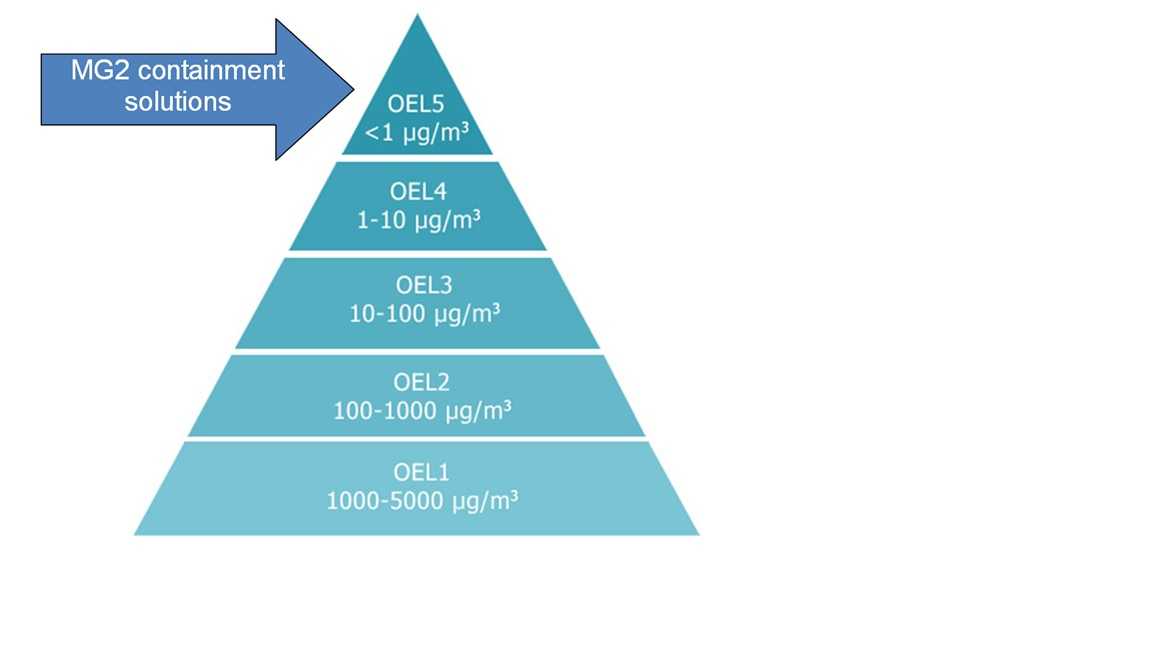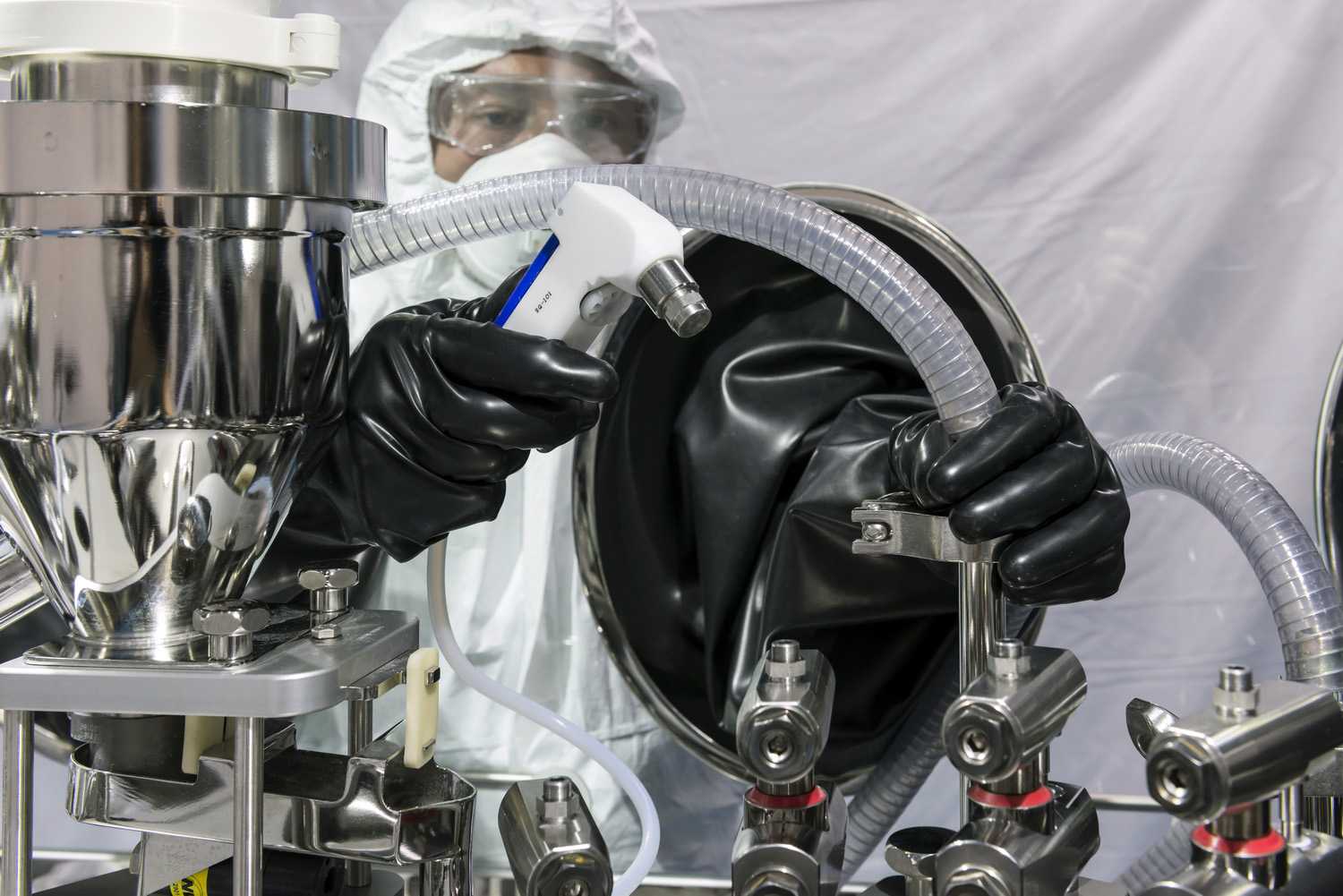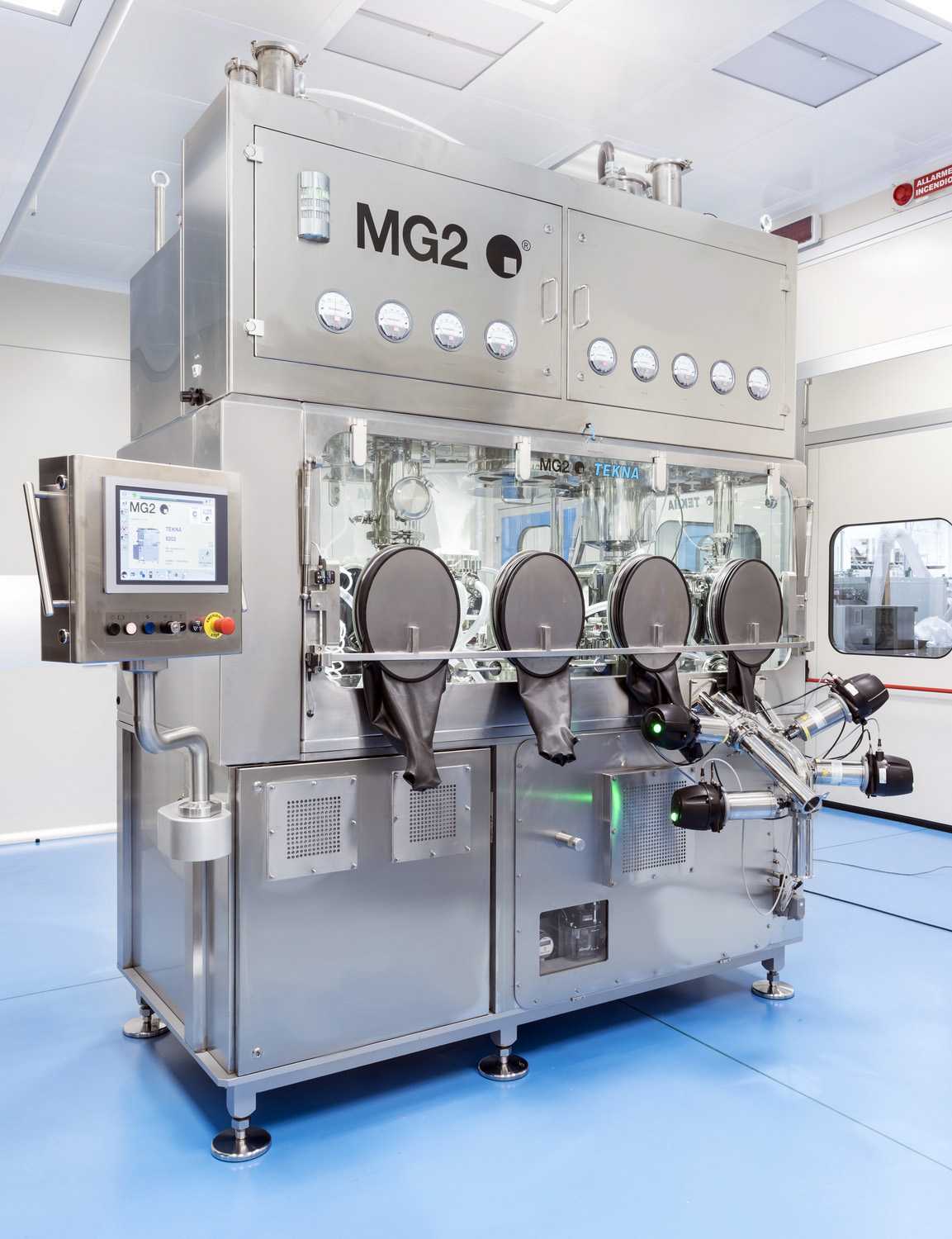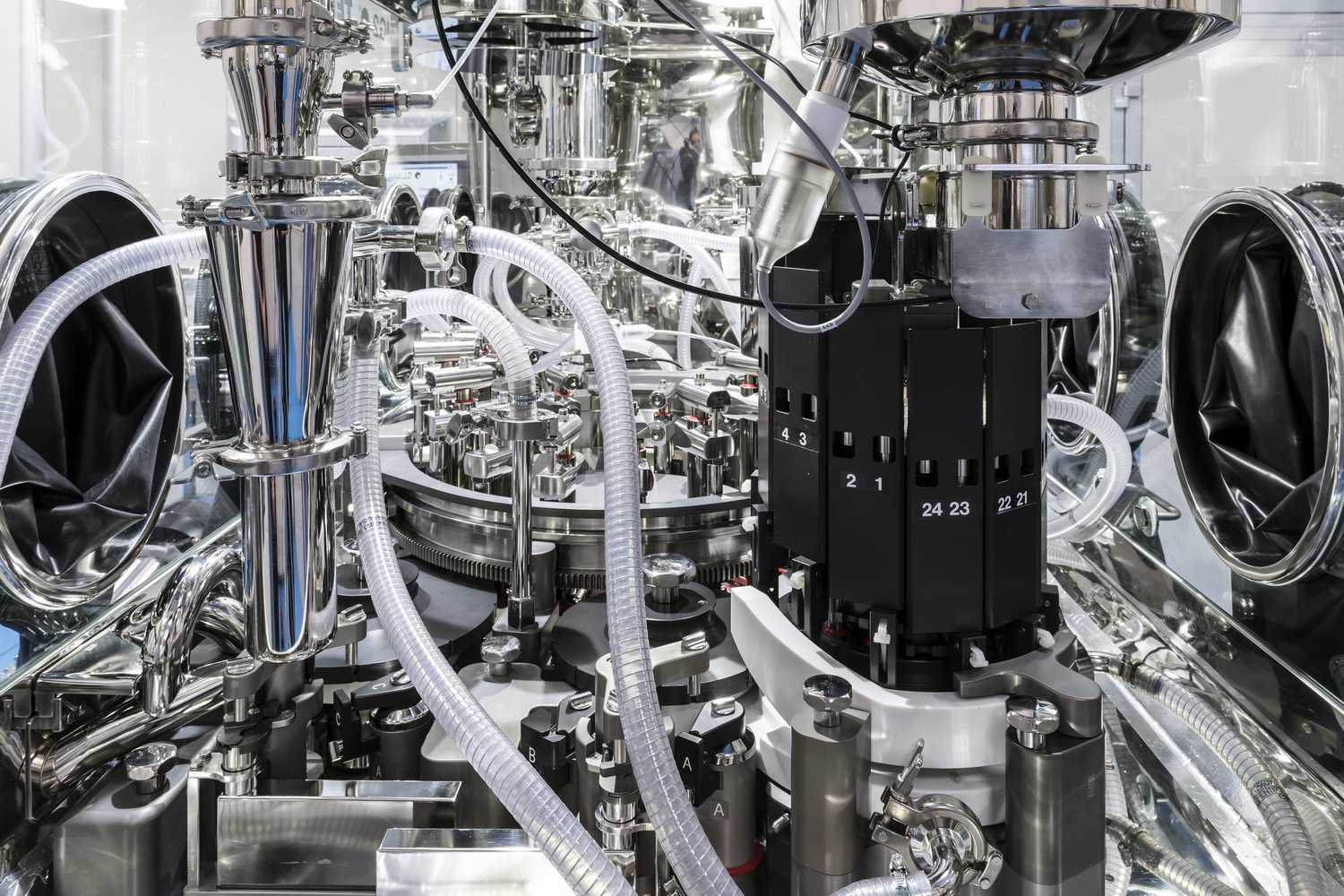Share your coffee stories with us by writing to info@comunicaffe.com.
PIAN DI MACINA DI PIANORO, Italy – During the last years, MG2 strongly invested both in the study and in the development of containment technology. These systems designed and sold by the Italian company are intended to safeguard the operator, the product and the environment.
They are among the most advanced on the market thanks to their unsurpassed modularity which allows to cover all the containment levels.
Containment: what it’s for and how it can be achieved
The main purpose of containment systems consists in avoiding the product release, thus assuring operators and environment protection from the exposure to potentially toxic substances.
Besides, isolators can also be utilized to protect the product from both external contamination and environmental unsuitable conditions, by keeping constant some parameters such as temperature and relative humidity level.
In favour of the operator’s safety, some OEL (Occupational Exposure Limit) thresholds have been defined, establishing the maximum product concentration level per cubic meter under which an operator being exposed for 8 hours per day does not run any risk.
Based on the product to be handled the customer defines the best OEL level. Such limits are typically managed by means of a classification into OEB (Occupational Exposure Band) classes, which determine the admissibility range. For example, OEB 5 class covers the range between 0,1 µg and 1 µg of product per cubic meter.
The higher classes (OEB4 and OEB5) are required for strongly active and/or toxic pharmaceutical products, such as those utilized for cancer treatment. MG2 machines can be equipped with different systems suitable for all OEB classes, based on the containment strategy required by the product.
For example, the utilization of isolators equipped with inflatable gaskets, gloves and RTP (Rapid Transfer Port) is of primary importance to satisfy the higher classes requirements (OEB5/OEB4).
 MG2 answer to innovative pharmaceutical production trends
MG2 answer to innovative pharmaceutical production trends
The reason why MG2 is investing in the study and in the development of such heterogeneous systems is based on both the increasing number of projects which foresee the adoption of containment strategies, and systems to comply with the more and more restrictive criteria in terms of control and safety followed by the pharmaceutical companies.
In fact, if on the one hand the adoption of containment strategies is a practice which has been utilized for long time to handle highly active products, during the last years many companies put into force in-house regulations foreseeing the compliance to high containment classes even when less critical products are to be handled with new production lines.
This willingness is going hand in hand with another important trend giving priority to the adoption of containment system on the machine instead of the utilization of personal protective equipment for the operator (PPE – Personal Protective Equipment), which are usually very expensive and poorly ergonomic in that they considerably hinder free movements.
This choice also makes it possible to take considerable advantages in terms of production environment conditioning, in that it allows to keep high air quality in smaller areas than it would happen by utilizing machines being not equipped with containment systems.
 Isolators, filters and cleaning systems to achieve OEB4 and OEB5 classes
Isolators, filters and cleaning systems to achieve OEB4 and OEB5 classes
MG2 isolators guarantee the highest containment level (OEB5/OEB4) and they represent the best solution for machines being specially dedicated to the production of either a specific product or generally high toxicity powder products, independently from their production capacity (low/medium/high).
The isolators perfectly integrate to both automatic product loading systems and high containment valves. One of the innovations introduced by MG2 in the isolators field consists in directly fixing the suction filters to the isolator.
In the past the filters were placed near the suction system at a given distance from the machine; a solution which required the adoption of special systems to correctly wash the air ducts.
On the contrary, the new location makes it possible to immediately filter toxic / active components, which in such way do not contaminate the ducts, by also allowing easier cleaning and maintenance operations. Filters utilized by MG2 adopt the “push push” technology which makes it possible to perform the replacement under more practical and especially totally safe conditions.
The cleaned filter is simply pushed into its correct position from the external of the isolator by causing the ejection of the dirty filter inside the isolator, where it will be taken out by means of the gloves and through the RTP port.
To further satisfy the customers’ requests in terms of operator safety, MG2 rigid isolators range includes three possible solutions which can be upgraded as far as the combination of containment and washing functions is concerned. The first option foresees only the isolator to carry out containment by means of suction hoses allowing to execute the dry-cleaning.
The second solution adds a spraying system to let the product lie at the end of production (Wet-in-Place) and the third solution reaches the maximum automation level thanks to a Wash-in-Place / Clean-in-Place automatic system followed by drying. In the scope of each solution the final customer can chose among a series of devices and optional functions covering the needs of each special application.
 Intermediate containment levels
Intermediate containment levels
Thanks to both the wide scalability and the flexibility of its products range, MG2 can satisfy also the requests for intermediate containment levels by proposing easier and cheaper solutions if compared to the actual rigid isolator.
Already in their standard configuration MG2 machines show high isolation features. For example, Planeta capsule filler during normal operation complies with OEB3 class limits thanks to its suction/vacuum systems which create a constant negative pressure inside the dosing area.
By upgrading the machines with the typical additional containment parts, it is possible to reach OEB4 level which is sufficient to comply with many applications.
For example, the capacity of the protection hood can be increased by adopting the so called “Enhanced Hood”, which, upon request, can be equipped with: gloves to carry out either adjustment operations or maintenance, nozzles to suck the product at the end of cycle (dry cleaning) or spray guns to perform moisten operations by spray (wet cleaning).
To carry out all these operations it would be normally necessary to open the doors, but thanks to the above containment accessories they can be performed in a close environment, which is for this reason also a controlled environment. The Enhanced Hood is also equipped with a filter placed on the air inlet duct, which further separates the product handling/dosing area from the production room.
 Certified Quality
Certified Quality
During the steps which follow the machine production, particular consideration is given to the performance of some tests necessary to both verify the capacity level and certify the OEB class to be assigned to the machine.
These tests can be run at MG2 before the delivery, but also at customer site once the machine installation has been done. For tests execution MG2 follows SMEPAC procedure (Standardized Measurement of Equipment Particulate Containment).
Besides, the performance of such tests is assigned by MG2 to third party companies specialized in carrying out trials and issuing the relevant certifications to guarantee strictness, objectivity and compliance.
Recently, the SMEPAC test has been run on a FlexaLAB capsule filler equipped with containment for an important multinational company, giving better results than the lower limit of OEB5 class.
The same result has been achieved for another machine: a TEKNA capsule filler with containment produced for a customer based in Portugal, who is a leader company in the development and in the production of inhalation pharmaceutical products.
Also PLANETA 200, the last arrival, our core model for capsule fillers, has already been sold both in a configuration allowing to reach the maximum containment level and also in a configuration with Enhanced Hood.
The preparation of the machines, the developments of systems and especially the performance of SMEPAC tests are strongly facilitated by the adoption of the Pharma Zone: in this area, situated at MG2 headquarters, it is possible to run dosing tests by utilizing active products under real production conditions before machine installation, thus resulting into a considerable saving in terms of both costs and time during the commissioning.
Also in such case, the investments made by the company based in Bologna are meant to support more and more the customer, who can take advantage of both know-how and technologies being unique in their category.
MG2 Facts and Figures
In the year of the 50th anniversary from its foundation, MG2 achieved a turnover of 30 million euros, an increase of 28% compared to 2015. Approximately 45% of the Company turnover comes from Europe, 30% from North America (Canada and US), 13% from Asia and Middle East and a further 7% from South America, while the remaining 5% is distributed among other geographic areas.
Around 4% of turnover is reinvested in research and development activities, both in terms of process improvement and in terms of technological breakthrough. The Company headquarter is based in Italy, in the heart of the Packaging Valley, in Pian di Macina di Pianoro (Bologna), inside a 15000 sq. mt. plant, where all production, sales, account and R&D activities are carried out.
MG2 also owns a sales and assistance branch in New Jersey (United States), covering in particular the Canadian and American markets. MG2 Group’s workforce counts approximately 200 people, but it is expected to grow in 2017, in order to cope with the increasing activities of the Company.
MG2 S.r.l.
Via del Savena, 18 – 40065 Pian di Macina di Pianoro (BO) Italia
Tel. +39 051 4694111
www.mg2.it, E-mail: press@mg2.it















